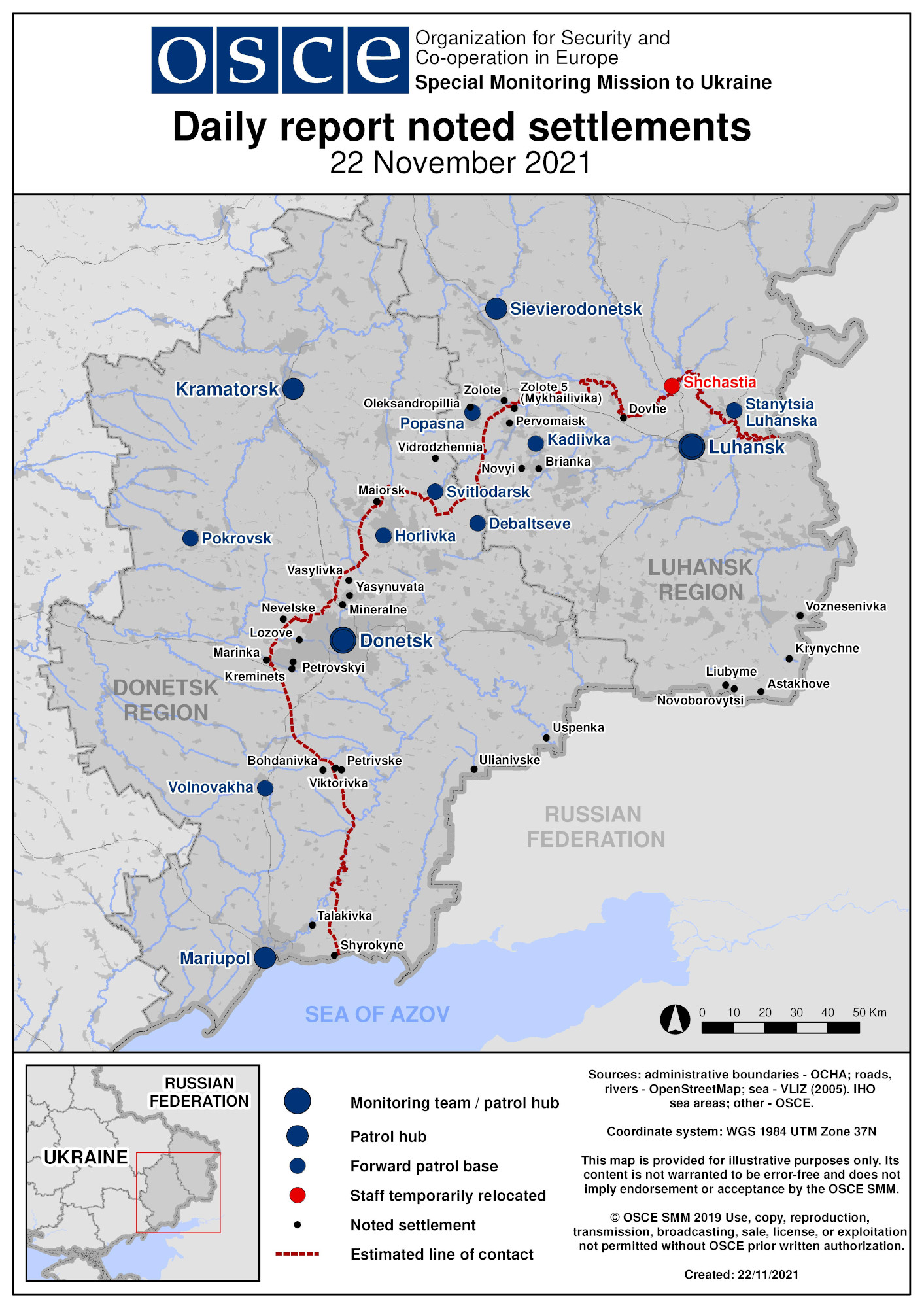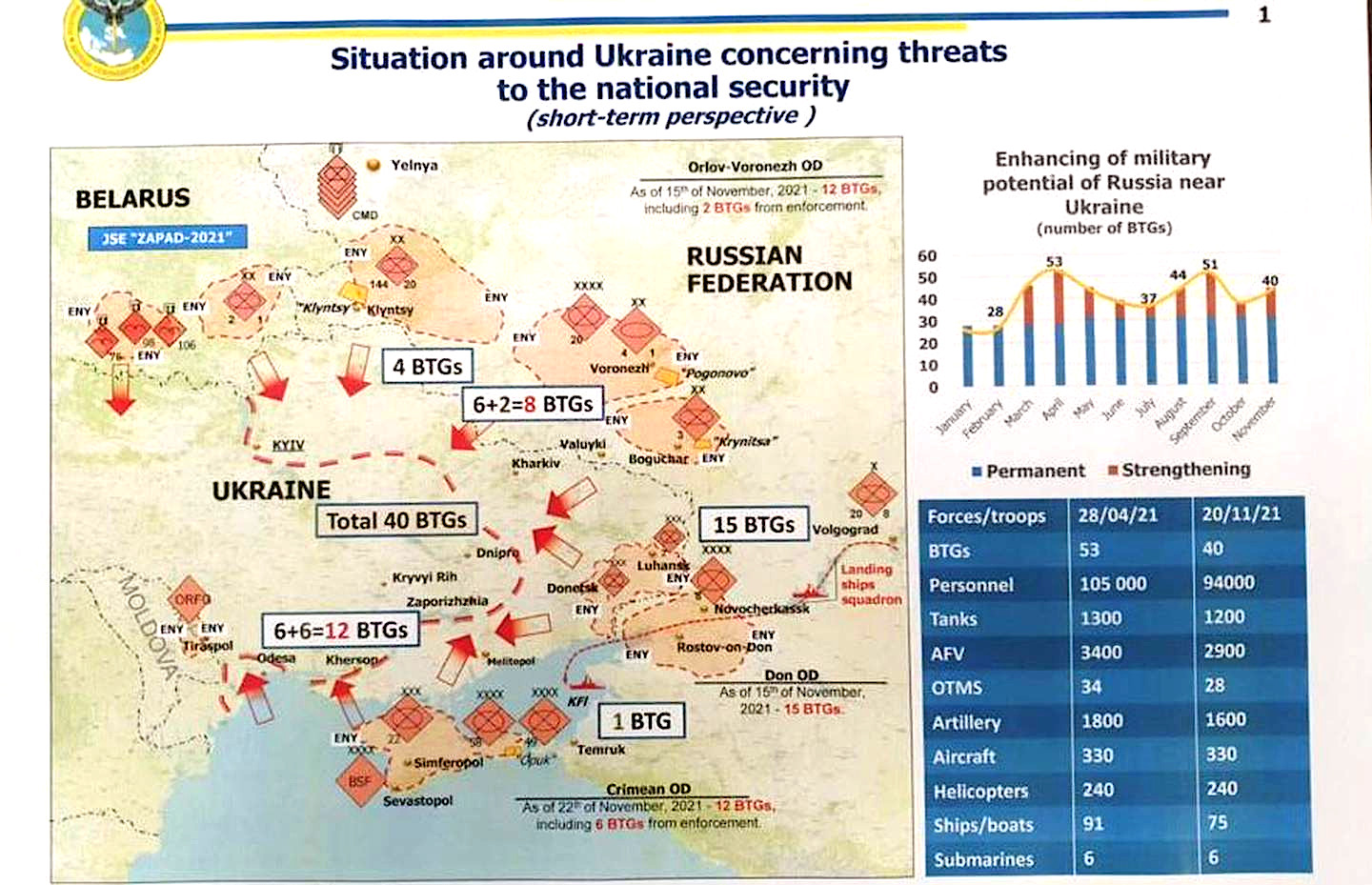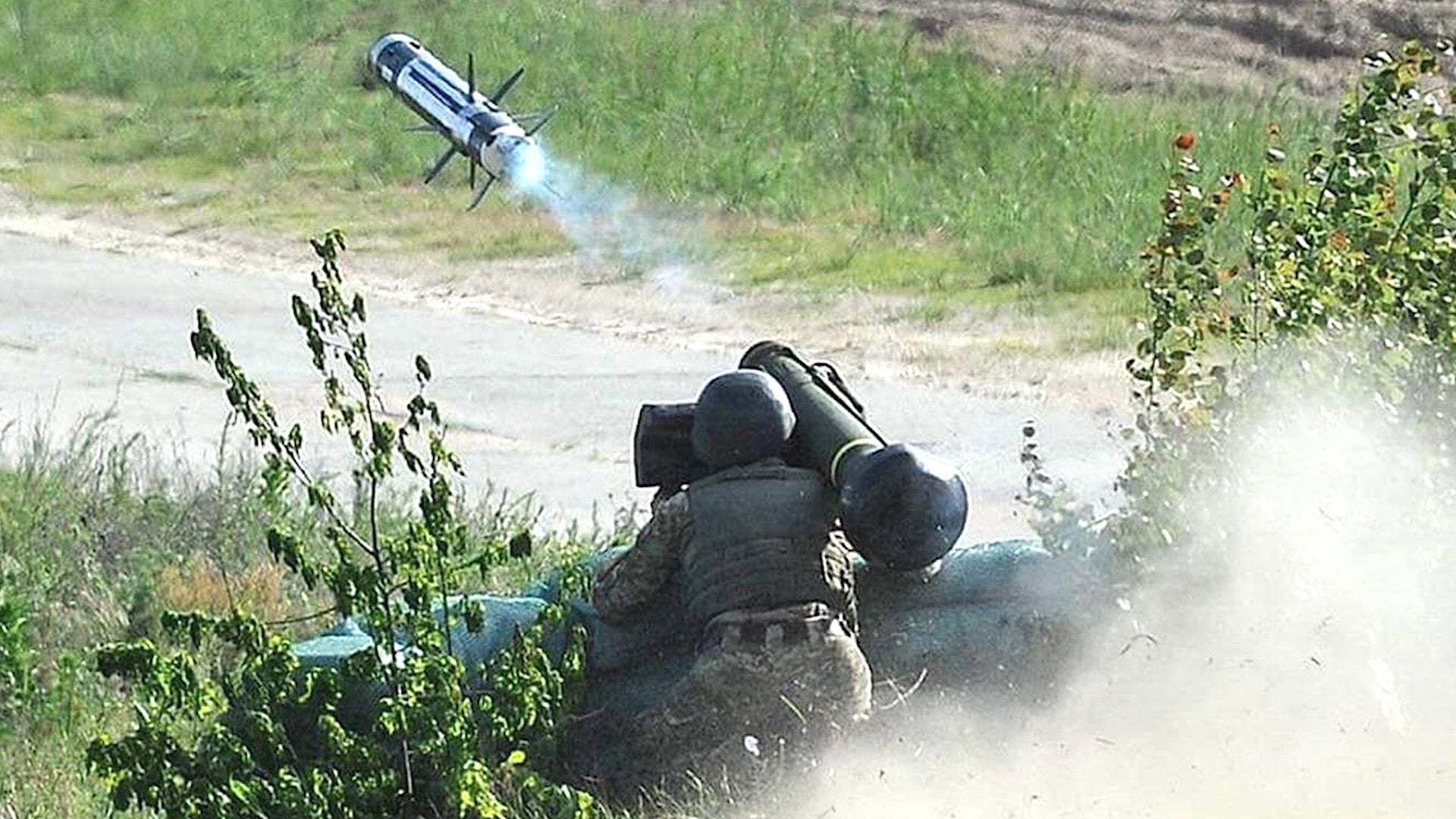The head of Ukraine’s top military intelligence agency has confirmed, for what appears to be the first time, that Ukrainian troops in the country’s eastern Donbass region have fired American-made Javelin anti-tank missiles at Russian or Russian-supported forces. These missiles, along with other advanced weapons that the Ukrainian military has acquired in recent years, such as Turkish Bayraktar TB2 armed drones, would be important factors in the outcome of any future major military confrontation with Russia. Fears are growing that the Kremlin could at least be prepared to launch a new, large-scale invasion of eastern Ukraine as early as January.
Ukrainian Brigadier General Kyrylo Budanov talked about the operational use of Javelins as part of a recent interview with Military Times, which he conducted through an interpreter. Budanov, who runs the Chief Directorate of Intelligence of the Ministry of Defence of Ukraine, also known by its Ukrainian acronym GUR MOU, used the opportunity to call for more help from the U.S. government as he sounded like the alarm about the Kremlin’s unusual deployments of large numbers of military units to areas opposite Russia’s borders with Ukraine in recent weeks.

“We need more [military assistance]. No countries except Ukraine have open war with Russia. And we have for seven years,” Budanov told Military Times. “That’s why we’re sure the U.S. should give us everything we didn’t get before. And right now. It’s the right time for this. Because after, it could be very late.”
In 2014, Russia seized and then annexed Ukraine’s Crimea region, an overt operation that was preceded by the covert deployment of special operations units and conventional troops, who were dubbed “little green men” on account of their unmarked green camouflage uniforms. That same year, the Kremlin sent additional forces into the Donbass to directly support ostensibly local “separatists,” groups that have since been shown to have strong ties to Russian intelligence agencies. Heavy armor and artillery have been important features of this conflict, which has been ongoing ever since.
The U.S. government’s decision to approve the sale of Javelins to Ukraine in 2018 was a major shift in policy and was seen as a clear attempt to bolster Ukraine’s ability to challenge any new Russian-supported offensive. The Javelin is a very capable man-portable guided anti-tank missile that can either be fired straight at a target or via a pop-up maneuver, after which it dives down onto the target. This latter mode of operation is valuable for engaging tanks and other armored vehicles, which typically have more limited armor protection on top, as well as various targets situated behind hard cover. The reusable Command Launch Unit (CLU) has a thermal imaging system with 12x magnification, giving the complete weapon a secondary surveillance capability, as well. Javelins also have a limited ability to engage low-flying helicopters.


However, it was not until last year that the U.S. government’s end-use agreements allowed Ukrainian troops to actually bring these weapons to the front lines in Donbas, so long as they were used “defensively.” Initially, the Ukrainian government had been prohibited from deploying these weapons except in the event of a more overt westward Russian invasion of the country.
Budanov did not provide any details about when the Javelins were first used against enemy forces in Donbass or under what circumstances. The War Zone has reached out to the Ukrainian Ministry of Defense for more information.
However, skirmishes along the so-called “line of contact” that separates “separatist” occupied areas from the rest of Ukraine, including dueling artillery fire, occur on a somewhat regular basis. Just in October, the Ukrainian military announced that it had carried out the first-ever strike using one of its armed TB2s, employing the drone to destroy a hostile 122-mm D-30 howitzer that had been shelling its positions.
Javelin has a demonstrated ability to hit targets up to nearly three miles away, which would certainly enable Ukrainian forces to engage threats on the other side of the line of contact.

Ukraine’s combat use of any of its Javelins is a significant development, demonstrating the country’s willingness and ability to employ these weapons now that it has approval from the U.S. government. Budanov specifically told Military Times that the Javelins, along with the TB2 drones, have “a significant psychological deterrent value … making Russians think twice about attacking.”
Any deterrents the Ukrainian military has are perhaps now more important than ever, with concerns that a flood of Russian troops into the region could give the Kremlin the option of launching a major invasion within a matter of weeks. Budanov provided Military Times with a briefing slide, seen below, outlining how Russia might execute such an operation, with thousands of troops simultaneously attacking from Russian territory to the north and east of the country, as well as Crimea and the Black Sea to the south. Russian forces in Belarus and in Transnistria, an almost entirely unrecognized breakaway region of Moldova situated to the west of Ukraine, might also be called upon to support a new military intervention.

The scenario outlined in the slide Budanov gave to Military Times shows the total Russian force consisting of around 40 “battalion tactical groups,” or BTGs, which can have between 700 and 900 total personnel, each. This would put the total size of the force at between 28,000 and 36,000 troops. The maps show a mixture of armored, mechanized infantry, and airborne infantry BTGs. Satellite imagery, as well as pictures and video taken on the ground in recent weeks, show significant amounts of heavy armor, self-propelled artillery, and even Iskander short-range ballistic missiles now in the region.
It has been pointed out that there were reportedly 53 BTGs deployed in parts of Russia opposite Ukraine in April, when there were also fears of a major imminent crisis erupting. The Russian military deployed 51 BTGs for its large-scale Zapad 2021 exercise, which took place in parts of western Russia and Belarus in September.
However, as The War Zone
reported at the time, even after tensions defused somewhat earlier this year, large amounts of armored vehicles, artillery, and other weapons and equipment remained in place as some troops withdrew. Certain units did not appear to actually return to their usual garrisons, either. All of this offers the Kremlin a way to rapidly enlarge its total force in the region if desired.
The Russian military has significantly expanded its permanent presence near Ukraine, as well, especially in Crimea, which now hosts significant numbers of combat aircraft, ground-based anti-ship missiles, and more. It is home now to the headquarters of the Russian Navy’s Black Sea fleet, which has various warships, submarines, and amphibious warfare vessels, assigned to it.
Air and missile strikes against Ukraine staged from deeper within Russia would almost certainly be part of any such future operation. Ukrainian officials and members of Congress in the United States have voiced concerns about the Ukrainian military’s limited air- and missile-defense capabilities and have previously issued calls to improve them in the face of threats from the Kremlin. President Joe Biden’s administration is now debating whether or not to send air-defense systems, including Stinger shoulder-fired heat-seeking surface-to-air missiles, to Ukraine, according to CNN.
The same report said that U.S. officials were also looking at the possibility of sending weapons and other equipment, including Russian-made Mi-17 Hip transport helicopters, a type Ukraine operates, that either would have gone to Afghanistan or perhaps even previously belonged to the now-defunct U.S.-backed Afghan military. The War Zone
was the first to report this weekend that three ex-Afghan Air Force Mi-17s had arrived at the U.S. Air Force’s boneyard at Davis-Monthan Air Force Base and that it was unclear what might happen to those helicopters in the future.
In the meantime, despite the framing of much of the reporting surrounding the situation, Ukrainian, American, and other officials seem to be in agreement that a possible Russian invasion next January or February is not inevitable. “They [the Russians] want to foment unrest, through protests and meetings, that show the people are against the government,” Budanov told Military Times.
Russian President Vladimir Putin is still trying to figure out whether to “go through the Ukrainian border and burn the bridges, or he is still bargaining and trying to find something interesting for him,” Ukrainian Defense Minister Oleksiy Reznikov told The Washington Post last week. “I hope he has not made his decision on this point.”

“Our intelligence, American intelligence, and U.K. intelligence — we have the same perception,” Reznikov added, speaking specifically about possible territory Russia might be interested in occupying.
“Our [intelligence] evaluations are almost the same as our American colleagues,” Budanov had also told Military Times.
“We are not sure exactly what Mr. Putin is up to,” U.S. Secretary of Defense Lloyd Austin said last week ahead of his meeting with Reznikov, echoing sentiments that he and other U.S. officials have been expressing about the situation for weeks now. “But these movements certainly have our attention. And I would urge Russia to be more transparent about what they are up to take steps to live up to the Minsk agreements.”

The “Minsk agreements” refer to deals mediated by France and Germany since 2014 to try to bring an end to conflict in eastern Ukraine. Last week, French and German authorities issued an unusually strong statement in support of Ukraine and criticizing the Kremlin’s commitment to the Minsk deals. Putin responded in turn by accusing Ukrainian authorities of attempting to sabotage the negotiations, which has been a talking point in the past, and warning that his country’s “red lines” on Ukraine and other issues were not being properly respected.
There has also been a spike in rhetoric emanating from the Kremlin that is clearly seeking to frame Ukrainian officials as the ones acting in extreme and threatening ways and that they are forcing Russia to flex its military muscles. This is a kind of deflection commonly associated with Russian disinformation campaigns.
This has all raised new concerns about a potential impending invasion. U.S. government and other officials have also accused Russia of leveraging unrest elsewhere, especially over the border crisis in Belarus, which you can read more about here, to distract from what is happening around Ukraine.
Whether or not Putin has decided already to launch a new major armed intervention into Ukraine or not, there are certainly a host of reasons why he could determine doing so would be worth the consequences. The most immediate perhaps is the fact that Ukrainian authorities continue to block the free flow of water into Crimea, which has become a crisis on the peninsula. A land grab in southern Ukraine could help secure the necessary water supplies.
Beyond that, Putin may simply be concerned that Russia is steadily losing its military edge against Ukraine, with its Javelins, TB2s, and other new weaponry. TB2s, in particular, have been used to blunt Russian-backed offensives in Libya and in Syria in recent years. They were also a major factor in Azerbaijan’s decisive victory over Armenia, another Russian partner, in a brief war last year. If the viability of any future military intervention for any reason appears to be slipping away, this could push the Kremlin to at least consider launching one now while it is still an option.
Putin himself has been under unusually significant pressure domestically in recent years, as well. There might be a view that a more open, large-scale war with Ukraine could distract domestic political opponents, even if the outcome isn’t entirely in Russia’s favor.
Budanov, the Ukrainian military intelligence chief, like other Ukrainian officials, hopes that ongoing U.S. and other foreign military assistance together with pressure from the international community will be enough to keep Russia at bay. The U.S. government has delivered new shipments of ammunition to Ukraine just in recent weeks.
Though there have been some calls from members of Congress to do so, the Pentagon has, so far, not shown any indication that it plans to send large amounts of troops to help hold the line, which would be a major escalation. CNN did report today that the Biden Administration was considering sending additional advisory personnel.
U.S. military warships have been operating in the Black Sea recently and U.S. military manned and unmanned intelligence, surveillance, and reconnaissance (ISR) aircraft, as well as those from other countries in Europe, are clearly monitoring developments in the region. At the same time, it is worth remembering that western ISR flights in this part of the world have been commonplace since 2014 and that American warships do regularly make trips in and out of the Black Sea for exercises and other missions.
So far, “they [the Russians] want to make the situation inside the country more and more dangerous and hard and make a situation where we have to change the government,” Budanov told Military Times. “If they can’t do that, then military troops will do their job.”
Whether or not a Russian invasion will materialize in the coming months remains to be seen, but unlike in 2014, Ukraine has new weapons, like its Javelins and TB2s, along with international partners who are keeping a very close eye on the situation.
Contact the author: joe@thedrive.com
